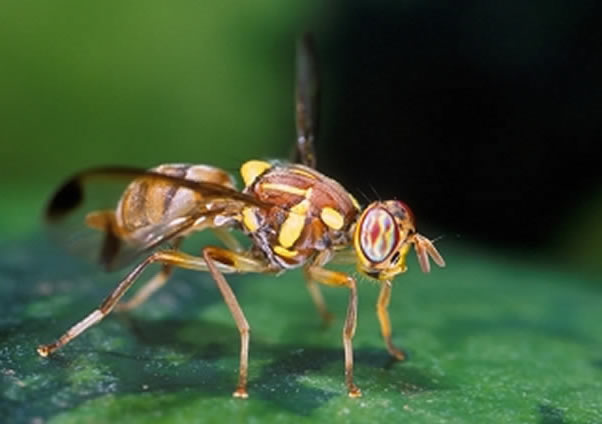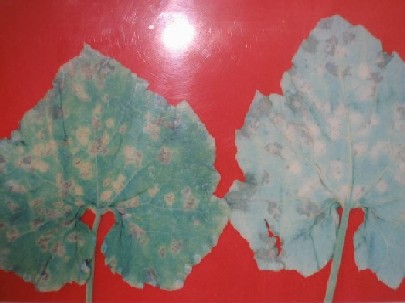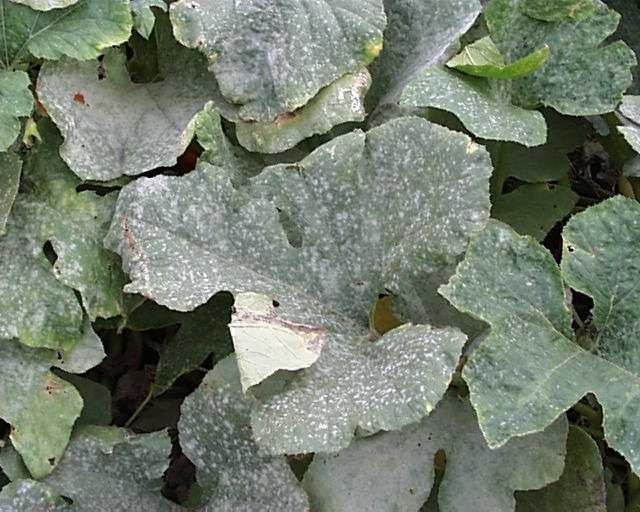Pests
Fruit flies: Bactocera cucurbitae
Fruit fly is the most destructive insect pest of snake gourd. Fruit fly maggots
feed on the internal tissues of the fruit causing premature fruit drop and also
yellowing and rotting of the affected fruits. This fly is difficult to control because
its maggots feed inside the fruits, protected from direct contact with insecticides.

Control:
Bury any infested fruits to prevent the build up of fruit fly population. In homestead
gardens, covering the fruits in polythene/paper covers help to prevent flies from
laying eggs inside the fruits. Breaking of soil to expose pupae, and burning the
soil in pit by dried leaves are also effective. It can also be effectively controlled
by the use of banana fruit traps.
Snake gourd semilooper: Anadevidia
peponis
Green coloured semilooper caterpillar cuts the edge of leaf lamina, folds it and
feed from with in. It is a specific pest of snake gourd.
Control: Hand pick the caterpillars and destroy them. In severe cases spray insecticides
like quinalphos (0.05%).
Epilachna beetle: Epilachna spp.
The yellowish coloured grubs and adults of the beetle feed voraciously on leaves
and tender plant parts, and the leaves are completely skeletonized leaving only
a network of veins. When in large number, the pest causes serious defoliation and
reduces yield.
Control: Remove and destroy egg masses, grubs and adults occurring on leaves. Spray
carbaryl 0.2%.
Pumpkin beetle: Aulacophora fevicolis,
A. cincta and A. intermedia
Adult beetles eat the leaves, make hole on foliage and causes damage on roots and
leaves. Grubs cause damage by feeding on root. It also feeds on flowers and bores
into developing fruits that touch the soil.
Control: Destroy
grubs and pupae.
Stem gallfly: Neolasioptera falcata
Damage caused by maggots by boring into distal shoots. Thickening or galls are seen
on shoots or stem.
Control: Apply insecticides like quinalphos
Aphids: Aphis gossypi
Aphids in large number congregate on tender parts of plant and suck sap
resulting in curling and crinkling of leaves. Ants carry aphids from one plant to
another.
Control: Apply 1.5% fish oil soap. First dissolve soap in hot water and then make
up the volume. Alternatively apply dimethoate 0.05%.
Leaf feeders and sucking pests:
Spray 2% talc based formulation of Beauvaria bassiana + 0.1% teepol at fortnightly intervals for the
management of leaf feeders. In severe case of infestation of pumpkin caterpillar,
apply chlorantraniliprole 18.5 SC @ 30 g ai/ha
Diseases
Downy mildew: Pseudoperonospora cubensis
Cottony white mycelial growth is seen on the leaf surface. Chlorotic specks can
be seen on the upper surface of the leaves. It is severe during rainy season.

Control: Complete removal and destruction of the affected leaves. Spray 10 % solution
of neem or kiriyath preparation. If the disease incidence is severe spraying mancozeb
0.2 % will be useful.
Powdery mildew: Erysiphe cichoracearum
The disease appears as small, round, whitish spots on leaves and stems. The spots
enlarge and coalesce rapidly and white powdery mass appears on the upper leaf surface.
Heavily infected leaves become yellow, and later become dry and brown. Extensive
premature defoliation of the older leaves resulting in yield reduction.

Control: Control the disease by spraying Dinocap 0.05%.
Mosaic (Cucumber Mosaic Virus)
Mosaic disease is characterized by vein clearing and chlorosis of leaves. The yellow
network of veins is very conspicuous and veins and veinlets are thickened. Growths
of plants infected in the early stages remain stunted and yield of the plant get
severely reduced. White fly (Bemisia tabaci) is the natural vector of this
virus.
Control: Control the vectors by spraying dimethoate 0.05% or phosphamidon 0.05%.
Uprooting and destruction of affected plants and collateral hosts should be done.
Top
|